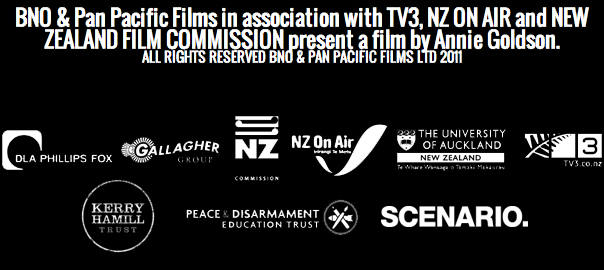Foreign Policy
In the latter half of the 20th century, New Zealand’s foreign policy towards Cambodia was defined by its commitment to two regional, multi-national agreements: SEATO (Southeast Asia Treaty Organization) and ASEAN (Association of Southeast Asian Nations). In addition, New Zealand’s policies were influenced by its relations with other Western nations, particularly the US - to which it was bound by the military co-operation treaty ANZUS (America-New Zealand-United States). Both SEATO (established in 1954) and ASEAN (established in 1967) sought to promote economic and political stability in Southeast Asia through regional agreements which tied participating nations to Western powers. A key tenet of both associations was to prevent the spread of communism in Southeast Asia.
New Zealand’s commitment to SEATO reflected its ongoing allegiance to the United States, and willingness to follow American policy in relation to the Asia region. This alliance saw New Zealand contribute troops to the American campaign during the Cold War conflicts in Korea and Vietnam. American anti-communism initiatives in the region during this period, including the carpet-bomb attacks on the Cambodian/Vietnam border and support for the military coup by anti-communist Marshal Lon Nol, clearly positioned the United States and its allies as enemies of the Khmer Rouge. However, as a consequence of a series of political shifts, the United States, along with other members of the SEATO alliance, ended up supporting and protecting Pol Pot and the Khmer Rouge in the years of civil war following the collapse of the Khmer Rouge regime in 1979.
While the Khmer Rouge and its leaders aligned themselves with communist Vietnam during the years of the Vietnam war, relations between Cambodia and Vietnam deteriorated during the years of the Khmer Rouge regime, leading to border skirmishes and the collapse of diplomatic relations. Vietnam consequently provided backing for an anti-Khmer Rouge force, known as the Kampuchean National United Front for National Salvation. Operating under the name of this organisation, Vietnam invaded and occupied Cambodia, forcing the Khmer Rouge into hiding. At this point, because the Khmer Rouge was effectively at war with Vietnam, they gained the political support of China, the US and other western nations, including New Zealand. Citing the Vietnamese takeover of Cambodia as an illegal occupation, the US and China put pressure on the United Nations to recognize the Khmer Rouge, then operating as a pro-Cambodian resistance movement, as the legitimate representative of Cambodia. Given that the Khmer Rouge were undoubtedly responsible for genocide and other crimes against humanity in the years 1975-1979, their recognition by the United Nations, and the support of the United States and other nations, is difficult to understand or accept. New Zealand historian Anthony Smith argues that New Zealand’s position regarding the political recognition of the Khmer Rouge as representatives of Cambodia was highly “ambivalent”:
“On one hand, New Zealand officially supported the ASEAN policy of recognizing the Khmer Rouge as the legitimate representatives of Kampuchea until 1982, when the Khmer Rouge became part of a wider anti-Vietnamese coalition. On the other hand, the documents show that New Zealand's political leaders were unhappy affording support to the Khmer Rouge and were adamant that the Khmer Rouge should not be returned to power in Kampuchea”
1 | Read the following academic articles on New Zealand’s policy towards Cambodia and the Khmer Rouge during this period, and evaluate New Zealand’s position:
Anthony Smith ‘The Devil you know: New Zealand’s recognition policy towards Cambodia from 1978-1990’ New Zealand Journal of History, 33, 2, (1999)
Paul Bellamy ‘After the killing fields: Paul Bellamy reviews New Zealand's approach to Cambodia from 1979 to 1989’. New Zealand International Review (Jan-Feb, 2008)
2 | Watch the clip below and consider how the Hamill family must have felt knowing that the New Zealand Government was backing a regime that had killed Kerry so brutally. Reflect on the complexities of international relations and address some of the moral dilemmas these raise. Can you think of another contemporary conflict that results in similar sets of dilemmas for a small nation-state like New Zealand? Consider, for example, New Zealand’s relationship to the conflict in Iraq and in Afghanistan.
NEW CLIP: AFTER THE KHMER ROUGE
Trade
Since the 1980s, New Zealand has pursued bi-lateral trade relations with Cambodia, as part of a broader economic policy relating to ASEAN (Association of Southeast Asian Nations). ASEAN is a regional economic and political alliance established in 1967 between Indonesia, Malaysia, the Philippines, Singapore, and Thailand, which subsequently expanded to include ten countries from the region. Cambodia did not join the association until 1999, because of internal political instability. For more information on ASEAN and New Zealand’s trade relations, see this site.
Refugees
During the years of the Khmer Rouge regime, hundreds of thousands of Cambodians became refugees, fleeing across the border to Thailand. From 1979 onward, New Zealand was part of an international response to the Cambodia refugee crisis in Thailand. Between 1979 and 1994, 4,661Cambodian refugees were resettled in New Zealand, and given permanent residency. While a percentage of this group subsequently relocated to Australia or elsewhere, to be closer to other family members, the Cambodian community in New Zealand has grown, reaching almost 7,000 in 2006, according to the national census. Although New Zealand’s Cambodian community remains small, its members have established cultural groups, associations, and Buddhist temples in the main centres, which have helped to increase the population’s visibility and maintain traditional cultural and religious practices. Man Hau Liev and Rosa Chhun. 'Cambodians - Fitting in: work, community and culture', Te Ara - the Encyclopedia of New Zealand, updated 4-Mar-09.
3 | Use this website as a starting point to research the Cambodian community in your area. Reflect upon the challenges faced by Cambodian immigrants to New Zealand, and consider the additional stresses experienced by political refugees. Here is clip of a series of stories by Cambodian refugees living in New Zealand who fled the Khmer Rouge.
NEW CLIP: TESTIMONIES

